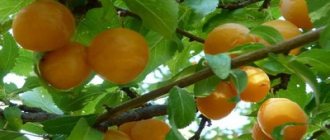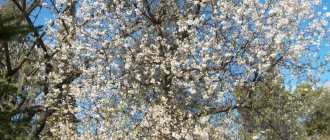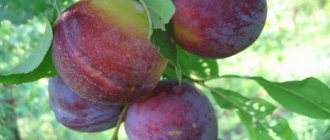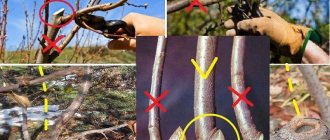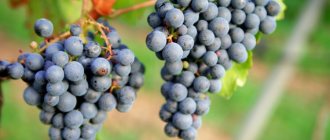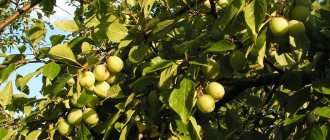Firefly is a species of plum tree with yellow fruit. This is a very popular variety, which is characterized by a large number of positive qualities. It is easy to care for, has a high yield of large, tasty drupes, is frost-resistant and resistant to various diseases.
History of the variety's creation
There are a huge number of varieties of homemade plums. They are the result of the work of breeders who, using hybridization, create new species of a given plant. Work to improve this culture continues today.
Plum Firefly is the creation of employees from the Research Institute of Horticulture named after I.V. Michurin. The authorship belongs to the talented breeders L.E. Kursakova, G.A. Kursakov, R.E. Bogdanov and G.G. Nikiforova. The variety was obtained by crossing Eurasia-21 and Volga Beauty. Its description appeared in the State Register in 2012.
The culture has been known to gardeners for a long time. But it was transferred to the State variety testing only in 2004.
The fruit tree is zoned in the Central Black Earth region, where it was created (the Michurin Research Institute is located in Michurinsk, Tambov region). However, due to its high frost resistance, it can also be grown in more northern regions.
Main characteristics
The plum variety Firefly is a tall tree that can reach 5 m. The crown is spreading and elliptical in shape. The branches are straight, red-brown. Covered with sparse villi.
The foliage is small in size, elongated, with small jagged edges. Smooth, dense, traditional dark green color. In spring, leaves appear before or during flowering.
If the plant's leaves turn light, it means it doesn't have enough sun or nutrients.
Flowering begins in late April - early May, and lasts up to 2 weeks (depending on weather conditions). The flowers are white, located on bouquet branches and spurs.
The culture is highly frost-resistant, tolerates drought well and has strong immunity. Resists many fungal diseases that often affect fruit trees. However, to prevent the development of diseases and reduce the likelihood of pests, it is necessary not to over-moisten the soil around the tree trunk, remove weeds in a timely manner and destroy affected leaves, hearths and shoots.
Description of fruits
The variety is early ripening and large-fruited. Drupes ripen by the end of July - beginning of August. They have a round shape, and the average weight reaches 40 g. The peduncle is thin and easily detached from the branches.
The color of the fruit is yellow with a greenish tint. The skin is thin and smooth, with a slight waxy coating that wipes off well. When eating, the skin is almost invisible. Inside there is a relatively small stone that is easily separated from the pulp.
The plum pulp is yellow, dense, slightly fibrous, juicy. The juice is light, almost transparent. The taste is sweet with a slight sourness and a pleasant delicate aroma. The sugar level is 8.5% and free acids are 0.99%. According to the description of professional tasters, the taste is rated 4.4 points on a five-point scale.
Fruits contain many useful substances, in particular vitamin C (concentration is 7.17 mg/100 g). Therefore, they are recommended to be consumed fresh. To store them in winter, you can freeze them or make jam from them.
Description of the variety with photo
The height of an adult tree reaches 5 meters. The crown is medium in density, has an oval shape, and the branches are spreading. The color of the shoots is brown, their thickness is small. Usually straight. The medium-sized leaves are dark green in color, ellipse-shaped, with jagged edges. The plate is concave, matte.
Fruit weight 40 g. Round shape. Color yellow-green. Skin with a waxy coating, thin. Subcutaneous, gray dots are noticeable. The seeds are small in size with good separation from the pulp.
The fruits are characterized by thick, juicy yellow pulp. Rating points: taste - 4.3, appearance - 4.5. There is a slight sourness in the taste. The fruits can be processed or eaten fresh. During transportation the safety is average.
Flowering occurs early. Harvest can be done at the end of July. They are classified as precocious. Fruiting begins for the third year from the year of planting. Fruits every year. The yields are stable. In terms of drought resistance, winter hardiness, and resistance to diseases and pests, the ratings are good.
Advantages:
- Fruit size;
- Taste;
- Harvest volume;
- Winter hardiness indicator.
Productivity
You can hear a lot of praise about plum productivity. It begins to bear fruit 3-4 years after planting in the ground. The yield of an adult tree is approximately 20 kg.
Fruiting is annual (this quality is highly valued by gardeners). A bad harvest may occur if the weather deteriorated during flowering (strong winds, heavy rains, prolonged frosts). Diseases also have a negative impact on productivity. Therefore, it is important to carry out treatment and preventive measures on time.
Diseases and pests
The Firefly plum is resistant to many diseases that often develop on fruit trees. It is rarely susceptible to moniliosis, rust and clasterosporiasis. In addition, it is rarely attacked by insect pests.
The main enemy of this crop is aphids. It can cause significant damage to the entire plant. To prevent parasite attacks, treat with insecticides or use folk remedies. To attract natural predators of aphids, flowering umbrella plants (dill, caraway, fennel, etc.) are planted in the garden.
The best way to prevent the development of diseases and pests is proper care. Therefore, to maintain plant productivity, it is recommended to perform the following activities:
- make sure that the tree trunk does not become waterlogged;
- whiten the trunk;
- treat wood cracks with iron sulfate;
- remove moss and lichens;
- In autumn, remove fallen leaves and spoiled fruits.
Advantages and disadvantages
The main advantage of the variety is considered to be large, tasty fruits with beautiful bright colors. Among the advantages are also called annual rich harvests and high winter hardiness. Like most mid-ripening fruits, plums cannot be stored for a long time or transported long distances, but they are great for fresh consumption, for processing for the winter and for making delicious desserts. They are used to make liqueurs, compotes, jams, jellies and marmalades; they are included in fruit salads and summer desserts with cream.
There are no disadvantages as such, but some gardeners complain about the lack of harvest without pollinating varieties. Non-self-fertility of plums is common, as is average resistance to diseases and pest attacks. When growing a large number of plum trees, they must be subjected to preventive treatments with Bordeaux mixture or vitriol before the leaves begin to bloom and after the leaves have completely fallen, and special preparations are used.
Today, gardeners see only the positive aspects of the new variety.
Advantages and disadvantages
The Firefly plum variety has many advantages:
- excellent quality of sweet fruits;
- stable abundant yield;
- high survival rate of seedlings;
- frost resistance;
- strong immunity.
This culture has practically no disadvantages. These include non-self-fertility and the need to use pollinators. As a result, owners of small gardens will not be able to cultivate it on their site. In such a situation, you can graft a pollinator branch onto the plum tree. The plant will turn out to be very unusual, and this action will resolve the issue of planting another seedling.
Plum Firefly: how to plant?
Plum Firefly: photo
In order for the Firefly plum to produce a large number of fruits, you need to know some criteria for its planting.
When and how to plant the Firefly plum depends on the climate. In the south the plant is planted in the autumn, in the north it is planted in the spring. The pit and soil should be prepared in advance.
Selection of seedlings
When you purchase a seedling, make sure that it is between one and two years old, and also look at the roots, they should be strong and healthy, without any injuries.
If the roots are dry, they can be placed in a container of water for two or three hours to soak. Before planting, the roots are sprayed with a preparation to strengthen and develop the roots.
Choosing a place to grow
The area for planting the Firefly plum variety should be bright, clean, and without gusts of wind. Do not plant the variety in lowlands, as water usually accumulates there after rain and fog. Stagnation will occur, the culture may rot and die. Therefore, it is better to plant on a hill. Also monitor the distance of groundwater, the gap should be approximately one hundred and fifty centimeters deep. Wet soil, for example, the coast, a swamp, is also not suitable.
Landing algorithm
It is necessary to make a hole, the depth is about fifty centimeters, the length and width are seventy centimeters. The soil mixture is made from fertile soil, adding humus, potassium, superphosphate, and coal.
The first layer should be drainage. Then a layer of fertile soil is made, a small mound is made. Next, the seedling is placed so that the roots are straightened and do not cling to each other. If there are any large spaces in the hole, you need to compact the soil. The neck of the roots should be on the surface at a distance of five to seven centimeters from the ground.
Next, you should dig a tree-trunk circle ten centimeters deep and fill it with a sufficient amount of water. Then add a layer of mulch, for example, you can use peat, manure or soil.
Landing
The planting process does not differ from the same procedure for other fruit crops. Planting can be done in spring or autumn, depending on the region (in northern latitudes it is recommended to do gardening in the spring).
The plant loves loose, fertile soils and will thrive in sandy loam and chernozem soils. The location must be chosen in the sun, protected from cold northern winds. Lowlands are not suitable for cultivation, as water constantly accumulates there. Groundwater should also lie deep enough (1.5-2 m from the surface level) so as not to harm the roots.
For planting, 1-2 year old seedlings with a closed or open root system are used. The hole is prepared in advance: if the planting takes place in the spring, then the hole is dug in the fall, if it is autumn, then the work is carried out at the end of summer.
A step-by-step description of the landing procedure is as follows:
- The hole is dug to a depth of 60 cm and a diameter of 70 cm. The top fertile layer is laid separately.
- Install a support - a thick wooden stick.
- The hole is filled with soil, which is prepared in the following proportions: 2 buckets of fertile soil + 1 bucket of humus (compost) + 500 g of wood ash + 300 g of superphosphate.
- The pit is covered with waterproof fiber and left alone.
- Immediately before planting, the roots of the seedling are dipped into a manure-clay mash.
- The hole is dug more than halfway and a small mound is formed at the bottom. A seedling is placed on it.
- The roots of the seedling are straightened in different directions and buried in soil, lightly compacted.
The root collar should remain 3-5 cm above ground level.
- A tree trunk circle is formed with a roller and a trench for irrigation.
- The seedling is watered with 2-3 buckets of water, pouring them gradually into the trench.
- The soil around the tree trunk is mulched with sawdust or peat, which allows moisture to be retained for a long period.
Plum transplant
Only those plums whose age has not exceeded 4-5 years can be transplanted.
In adults, the root system grows so much that digging up the tree can cause irreparable harm to it. Any injuries have a very bad effect on the plum, which must be taken into account when moving it to a new place, keeping an eye on both the roots and branches. It is better to “dress” the former in a bag, and carefully tie the latter with ropes. When you start replanting, you should first of all moisten the young tree well (4-5 buckets of water will be enough) - this will make it easier to dig it up. Afterwards, the tree is dug in along a radius of 70 cm from the trunk until a cone-shaped piece of earth with roots is obtained.
With extreme caution, it is pulled out of the ground and transplanted to another site according to the planting rules described a little earlier. Based on the recommendations regarding plum planting, the required period for transplantation is early spring
Care
The plum variety Firefly will require standard agrotechnical measures. It is important to do them on time so that the plant develops properly.
Watering
Plum loves moisture, but can tolerate drought without negative consequences. A young seedling needs a lot of water in the first year after planting. It must be watered at least once a week, adding 2-3 buckets of water.
If watering is carried out using a sprinkler, it should work for about 2 hours.
Mature trees no longer need frequent watering. They are watered as needed and depending on the dryness of the summer. If the summer is rainy, then additional water will not be required. There are three cases of mandatory watering:
- In the spring, before the buds awaken.
- During fruit ripening.
- In the fall, after the leaves fall, before wintering (add 2 buckets of water every day for a week).
Trimming
After planting, the seedling is not pruned. The first “haircut” is postponed to the next season. It is performed in early spring, before the buds swell. On the trunk, several of the strongest shoots are identified, which will become the basis of the crown, and they are shortened by a third. All other branches are cut off (but no more than a quarter of the entire crown).
In subsequent years, sanitary pruning is carried out, which includes the removal of damaged and frozen shoots. They cut off branches that grow in the middle and thicken the crown, and also rub against other shoots. The root growth is cut off at the very root, for which the ground is carefully dug up.
Plum is very sensitive to pruning, so the procedure is carried out only with sharp garden scissors or pruning shears. You can't break off shoots. If a large branch is removed, the cut site is treated with garden varnish.
Top dressing
In the first 2 years, additional nutrition is not necessary. The plant receives all its nutrients from the soil, which was mixed during the planting process. From the third year, feeding is carried out annually according to the following scheme:
- Before flowering - urea or ammonium nitrate + potassium sulfate.
- In the process of fruit set - urea + nitrophoska.
- During fruit ripening - liquid organic matter.
- After harvesting - superphosphate + potassium sulfate.
Once every three years in the fall, organic fertilizers (humus, compost) and wood ash are added to the digging.
Wintering
The culture is characterized by frost resistance, so it should not be insulated. It is recommended to cover only young plums if they are cultivated in the northern regions. To do this, use burlap or agrofibre. To protect the young bark from rodents, you should cover the trunk with spruce branches or use special nets.
The main measures before wintering will be water-charging irrigation and mulching the tree trunk circle with peat or compost.
Standard deviation – indicator and concept – “standard deviation”
Standard deviation indicator is based on the concept of standard deviation. What is standard deviation and how to learn to understand it - these questions arise when we see the formula by which the standard deviation is found. But let's look at the task that one of the teachers of a modern Western school gave to his students so that they could quickly learn to understand the standard deviation.
Standard deviation formula
You need to learn to understand that standard deviation shows how spread out numbers are compared to each other.
| 2 | 4 | 6 | 8 | 10 | |
| a) | 1 | 3 | 5 | 7 | 9 |
| 12 | 14 | 16 | 18 | 20 | |
| 4001 | 4003 | 4005 | 4007 | 4009 | |
| -2 | -4 | -6 | -8 | -10 | |
| b) | 2 | 5 | 8 | 11 | 14 |
| 2 | 4 | 6 | 8 | 11 | |
| c) | 1 | 2 | 3 | 4 | 5 |
| 2 | 4 | 6 | 8 | 9 |
First, students were given a list of numbers: 2, 4, 6, 8, 10, and the first thing the teacher asked them to do was find five other numbers with the same standard deviation; usually, they do not have to calculate the standard deviation. We just need to calculate the spread and we will see that the numbers differ from each other by 2. Therefore, it is easy to find other such numbers. Examples a).
Next, students were asked to find numbers with a large standard deviation. In addition to simply increasing each number by three, you can use a slightly larger gap on just one number. Examples b).
Next, we needed to find numbers with a smaller standard deviation. Examples c).
So we find out that standard deviation measures how widely spread the numbers are compared to each other.
Reviews
Larisa Kushch, Moscow: Svetlyachok plum is one of my favorite varieties. She grows well and is easy to care for. The drupes are sweet and juicy. There are a lot of them, so we juice and freeze them for storage.
Evgenia Makarova, Voronezh: The taste of Firefly is beyond praise. Favorite tree in the garden. The first fruits appeared after 4 years, and now it bears fruit every year.
Mikhail Igorevich, Saratov: I have only positive reviews about the Firefly plum. The variety is easy to care for and tolerates frost and prolonged absence of rain. Not sick. I don’t process anything, so I get an environmentally friendly product.
Harvest and storage
In order for the picked plum to please the consumer for a long time, it must be collected correctly.
To do this, you should adhere to the following rules:
- Harvest only in dry weather. The presence of moisture on the fruits can lead to their rotting.
- The collection is carried out in several stages, since ripening occurs gradually. It is necessary to pick only ripe plums.
- To preserve the harvest for a long time, it is recommended to cut the fruit with scissors.
- You should not remove the waxy coating from the plum ; it protects the fruit from the negative effects of the environment.
- For long-term storage, it is recommended to leave the fruits without mechanical damage.
Did you know? More than 100 varieties of plum seeds were discovered on Henry VIII's ship, the Mary Rose, which sank in 1545.
By studying the features of growing the Firefly plum in your garden and adhering to the basic conditions for caring for it, you can get a good harvest.
